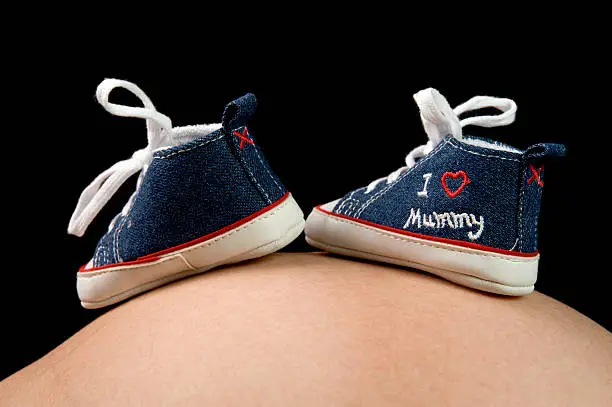Top Features to Look for in Women’s Tennis Shoes
Tennis is a sport that seamlessly blends agility, speed, and endurance, demanding skill, strategy, and the right gear to enhance performance. Central to this gear is the footwear. The right tennis shoes can differentiate between victory and defeat, providing comfort, support, and efficiency on the court.
In the diverse world of women’s tennis shoes, choosing the right pair involves understanding various features designed to cater to specific needs and playing styles.
This article aims to guide athletes through the essential aspects to consider when selecting the perfect tennis shoe, ensuring a well-informed and strategic choice that supports peak performance.
Key Takeaways
- Women’s tennis shoes should provide comfort, stability, and durability for an optimal playing experience.
- Consideration of material, support, and cushioning is essential when selecting the ideal tennis shoe.
- Choosing the correct type of outsole can significantly enhance performance on different court surfaces.
- Design and fit are crucial to ensure that shoes are functional and stylish.
Comfort and Fit
When it comes to selecting women’s tennis shoes, comfort is indispensable. A shoe’s fit greatly influences its comfortability, which is crucial during intense matches where the last thing a player needs is discomfort distracting them. To achieve this, it’s essential to consider the shoe’s structure. Opt for a design that moulds to the foot’s natural contour, offering a snug yet flexible embrace.
Trying shoes on with the socks typically worn during play can ensure an accurate fit, minimizing potential irritations. Key features such as a padded tongue and collar significantly enhance comfort, providing cushioning to prevent blisters and irritation around the ankles, even during the most vigorous movements.
Natural Shape and Flexibility
The ability of a tennis shoe to mimic the foot’s natural shape enhances comfort and performance. Flexibility in the shoe’s upper, often achieved with breathable mesh or synthetic materials, allows for uninhibited movement, which is essential for executing swift and dynamic footwork. These materials also promote airflow, keep feet cool and dry, and prevent heat-related discomfort—essential during long matches or in hot weather conditions.
Support and Stability
Support plays a pivotal role in a tennis shoe’s construction, serving as the cornerstone for stability and balance on the court. Adequate support, particularly in the arch and heel area, is crucial for maintaining proper alignment and reducing the risk of injury. A well-designed midsole offering arch support can prevent foot strain by evenly distributing impact forces during play.
Furthermore, stability features such as reinforced sidewalls and a firm heel counter help control foot movements, minimizing overpronation and enhancing lateral stability. These characteristics are essential for maintaining agility and control, especially during rapid directional changes common in tennis.
Cushioning and Impact Protection
Tennis is inherently a high-impact sport, requiring shoes that can absorb shock and ease the stress on the feet and joints. Cushioning must be a top priority in selecting tennis footwear, ensuring the player experiences maximum comfort alongside peak performance.
Look for shoes with advanced cushioning technologies, such as gel inserts or air pods designed to disperse impact forces and provide a soft yet responsive platform. These features significantly reduce fatigue and help enhance endurance during long matches and strenuous play by cushioning the load.
Energy Return and Responsiveness
Beyond shock absorption, cushioning enhances a shoe’s responsiveness, which is vital to movement efficiency. High-quality cushioning can provide a touch of propulsion, aiding players by improving their speed and agility with each stride and jump.
This responsiveness is particularly beneficial for players who rely on quick changes of direction and bursts of speed to outmanoeuvre opponents, thus supporting their competitive edge on the court.
Outsole and Traction
A shoe’s outsole’s design and material are crucial in determining its suitability for different court surfaces. Tennis shoes tailored to specific terrains—such as hard courts, clay courts, or grass courts—feature distinct outsole characteristics to maximize traction and performance.
For instance, shoes suited for hard courts typically include a durable rubber outsole with a herringbone pattern, providing excellent grip and reducing wear. This ensures the stability and longevity of the shoe’s performance. Clay-court shoes, on the other hand, often have a full herringbone pattern that provides traction and prevents clogging by allowing the clay to slide away naturally with each step.
Durability and Performance
Durability is an essential consideration when selecting the ideal tennis shoe. Shoes subjected to the rigours of competitive play should withstand intense wear and tear. High-quality materials and reinforced construction methods ensure this longevity, ensuring the shoe’s integrity remains intact even during extended use.
Durable outsoles provide superior traction and performance and make for a cost-effective investment by extending the shoe’s lifespan.
Design and Aesthetics
While technical features are paramount, the design and aesthetics of tennis shoes are also important. A visually appealing shoe can boost players’ confidence, adding a psychological edge to their performance.
Seeking a pair that combines fashionable design with functionality can enrich the overall playing experience, reflecting personal style without compromising essential performance features. From sleek minimalist designs to vibrant and bold colours, many options allow players to express individuality and taste on the court, helping to set the tone for confidence and readiness.
Breathability and Ventilation
Beyond design, ensuring the shoes offer sufficient breathability is crucial for comfort, especially during high-intensity matches. Incorporating elements like mesh upper panels or strategically perforated materials allows for optimal airflow, preventing excessive sweating and keeping feet cool. Proper ventilation enhances comfort and improves hygiene, reducing the risk of bacterial growth and associated odours.
Conclusion
In summary, selecting the right tennis shoes enhances a player’s performance and comfort. Tennis players can find shoes that seamlessly blend performance attributes with personal style by focusing on key features such as comfort and fit, support and stability, cushioning, outsole design, and aesthetics. Proper footwear translates to effective movements, reduced injury risk, and enduring comfort throughout the play.
By making informed choices based on these factors, female tennis players can confidently equip themselves with shoes that complement their playing style and empower them to excel and enjoy the sport. An ideal pair of tennis shoes offers more than just protection; it supports aspirations, boosts confidence, and elevates the game.






